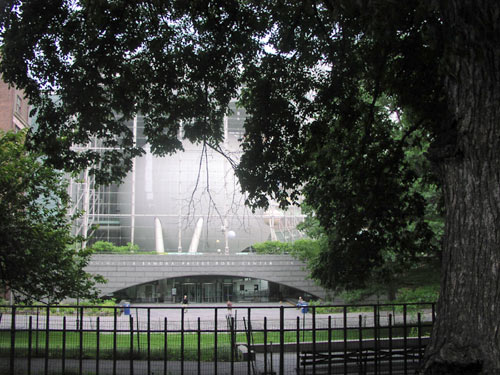

This summer I visited Manhattan. Manhattan is not a dark sky area, but it has something almost as good; the Hayden Planetarium. It is located inside the Frederick Phineas & Sandra Priest Rose Center for Earth and Space, and both are on the north end of the American Museum of Natural History.
You can enter from West 81st Street, or through the Museum at West 79th Street.

Above is the Rose Center as seen from West 81st street. The circular shape is the Hayden Sphere; the planetarium is inside the sphere.
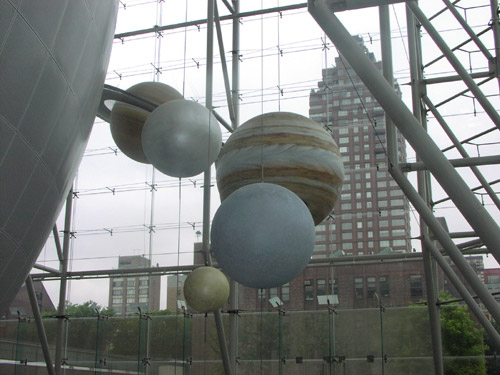
There is a spiral walkway that winds around the sphere. The second photo (above) was taken from the walkway. The Hayden Sphere is to the left and Manhattan buildings are visible in the background. The Hayden sphere is used to help visitors visualize astronomical scale. Models of the planets (including Saturn, Jupiter, Neptune and Uranus) are suspended from the ceiling. If you think of the Hayden sphere as the Sun, then the models have the appropriate size. (The analogy isn’t perfect; they are all too close to each other).
There are stainless steel displays along the walkway. As you walk down the spiral, these displays ask you to make further comparisons of this type. The Hayden sphere is the large reference object which you then compare to a smaller object. In steps like this, you can work your way down from the entire universe to single atoms.
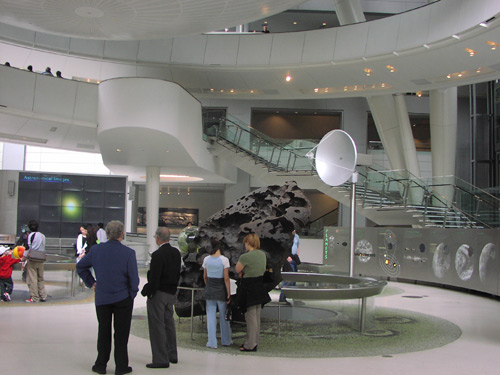
If you continue down the spiral walkway, you end up at the lower level. The bottom of the Hayden Sphere is visible at the top of the third photo (above). Two circular courses of the spiral staircase are also visible.
In the center of the picture is a large meteorite. Around the walls are stainless steel displays. The display to the right of the meteorite is about the planets. To the left of the meteorite is a display of astronomical images.
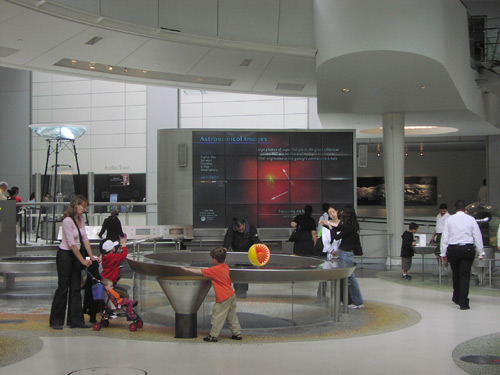
The images change while you watch them, as you can see in the fourth picture (above).
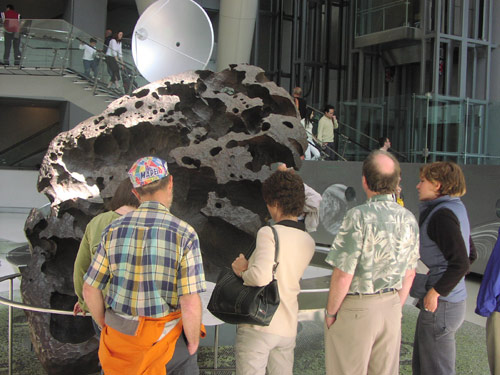
The fifth picture (above) is a close up of the meteorite.
There are many more displays. The picture below shows different types of stars. For example, Sirius is an Intermediate Mass Star, Antares is a High-Mass Star and Rigel is a Very High-Mass Star.
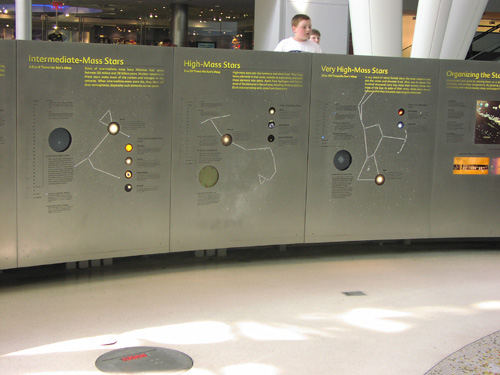
The circle at bottom left is a scale. There are several similar scales at different places in the room. They do not display your Earth weight, rather they display what your weight would be on the Sun or Mars or some other object.
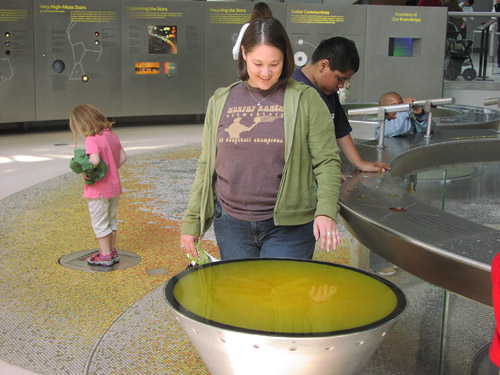
There were a number of hands-on displays. In the foreground of the seventh picture (above) is a cone filled with a yellow liquid. You can’t see it in the photograph, but when you rotate the cone, you can create patterns similar to the convection currents in stars.
To the left, a girl is standing on one of the scales I mentioned earlier. The displays to the right show how different types of electromagnetic radiation are used in astronomy.
Along the back is the display of stars shown previously. Even though you can’t read the text, some of you may recognize the H-R diagram in the center.
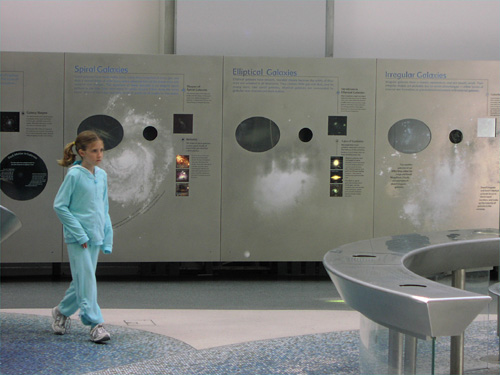
Other displays show the different types of Galaxies: Spiral, Elliptical and Irregular. (See the eighth photo above).
Central Park is a short walk from the Rose Center. Walk across Central Park, and you will find the Metropolitan Museum of Art (the Met for short).
You might not expect to find anything related to astronomy in the Metropolitan Museum of Art, however....
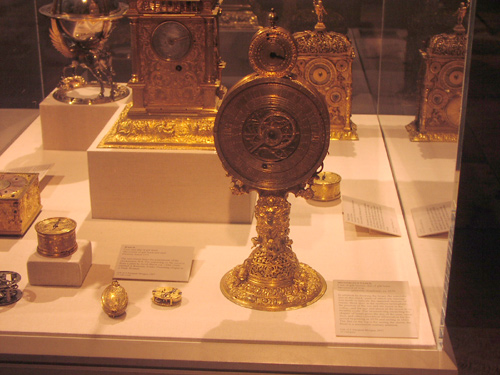
There was a display of old timepieces. See the last photo (above). The object on the front right is an astrolabe, a mechanical computer used to calculate astronomical events. (I couldn’t use flash -they don’t permit it- and I didn’t have a tripod, so this photograph is darker than I would like).
The card seen to the right of the astrolabe went into more detail. It reads as follows:
Monstrance Clock
Case of gilt bronze; dial of gilt brass
Movement of iron
German (probably Augsburg), ca. 1570.In addition to showing the hours, the astrolabe dial of this clock (parts of which are missing) was made to indicate the apparent motions of twenty-three stars in the northern hemisphere, the position of the sun and the moon in the zodiac, and the age and phase of the moon in its monthly cycle. The recessed ring encircling the chapter of hours gives the day of the year, saints’ days, and other calendrical information for the period beginning in 1570 and ending in 1610. The dial on the top is for setting the alarm, the finial is a nineteenth-century addition.
Gift of J. Pierpont Morgan, 1917
17.190.639
The Met is not the only place to see astrolabes. As I understand it, the best place to see astrolabes is Chicago where you can find a large collection.